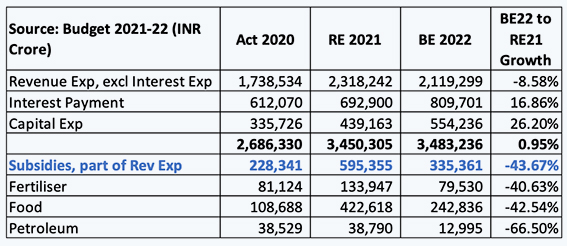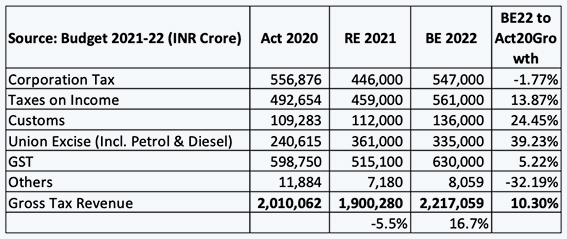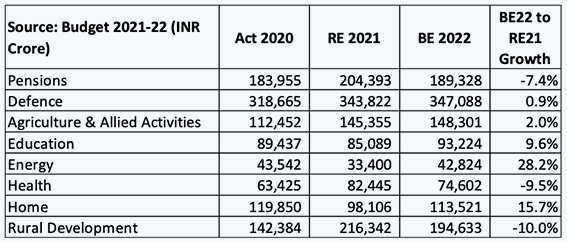The Economic Survey highlighted that COVID-19 has affected our lives, as well as livelihoods and ‘the lockdown’, had a causal impact on saving lives and the economic recovery”. While the CEA mentioned (19 times) experiencing a V-shaped recovery, the FM did not even mention that once in her speech. The Budget assumes that the economy will grow at 14.4% during the next year. The FM highlighted that the government is investing in aiding recovery without worrying about the fiscal deficit level.
Indeed, the government has wisely ignored the concern about the fiscal deficit; it is not clear if the Budget will aid nascent recovery and put us on a path of growth that will help take the country back to a level between 6-7% on a sustainable basis. We have to remember that our growth rate had already fallen below 5% during the pre-pandemic period itself.
While the capital expenditure is budgeted to increase by 26.2%, the revenue expenditure is expected to decline by 8.6%. Interest payments are estimated to go up by 16.9% during the next year. Increased allotment for CapEx is just Rs. 1.15 lakh crores, though 26.2%.

The total expenditure is expected to go up only by 0.95%, far less than the expected inflation rate. In real terms, the government support to the struggling economy is shrinking.
We, therefore, need to ask the following questions:
- Does it imply that economic recovery is well under its way, and don’t need government support?
- Does it also indicate that the private sector will lead the recovery and the government support is required only on the margin?
- Would the government be able to reduce the subsidy to about half of what it is during the current year, when oil prices have been hardening, and we are struggling to grow employment, particularly in employment-intensive sectors like tourism, consumption, etc.?
Our assessment is that the private sector will find it challenging to lead recovery, given that MSMEs are continuing to struggle for orders and finance and banks are inadequately capitalised (particularly the PSBs who have not received adequate capitalisation support in the current Budget too). If the private sector struggles to recover, the government will need to continue supporting the economy.
As seen in the table below, the government’s own maths on resource mobilisation betrays its confidence about recovery, as seen in its revenue collection estimate.

A rise in collections is primarily driven by an increase in taxes on individuals – direct and indirect (union excise duty). Corporation tax and GST are not expected to grow over the FY 20, which was a low growth year.
Consequently, there are compromises in resource allocation across the most critical sectors of the economy, as seen in the table below.

The government has focused its policy choices on privatisation and disinvestment, expecting that private enterprise will drive growth in the long run. Given the state of public sector organisation and their valuation, we will have to sell them cheap, which is not in the public interest and also there are not many private sector firms in India that have resources and/or the capability to integrate large public sector organisations.
The Budget has and will perk up the financial markets, the question that would come up during the coming weeks is:
Has the Budget provided the needed to support to prepare the ground for robust recovery or not?
We will know that in a couple of quarters.











